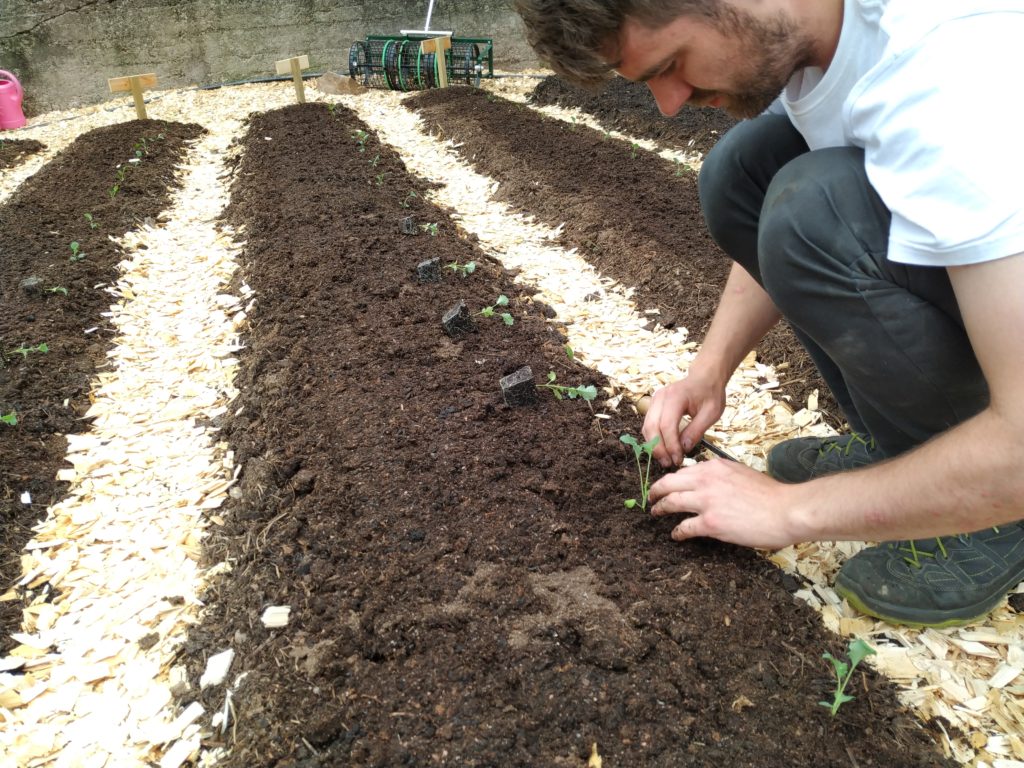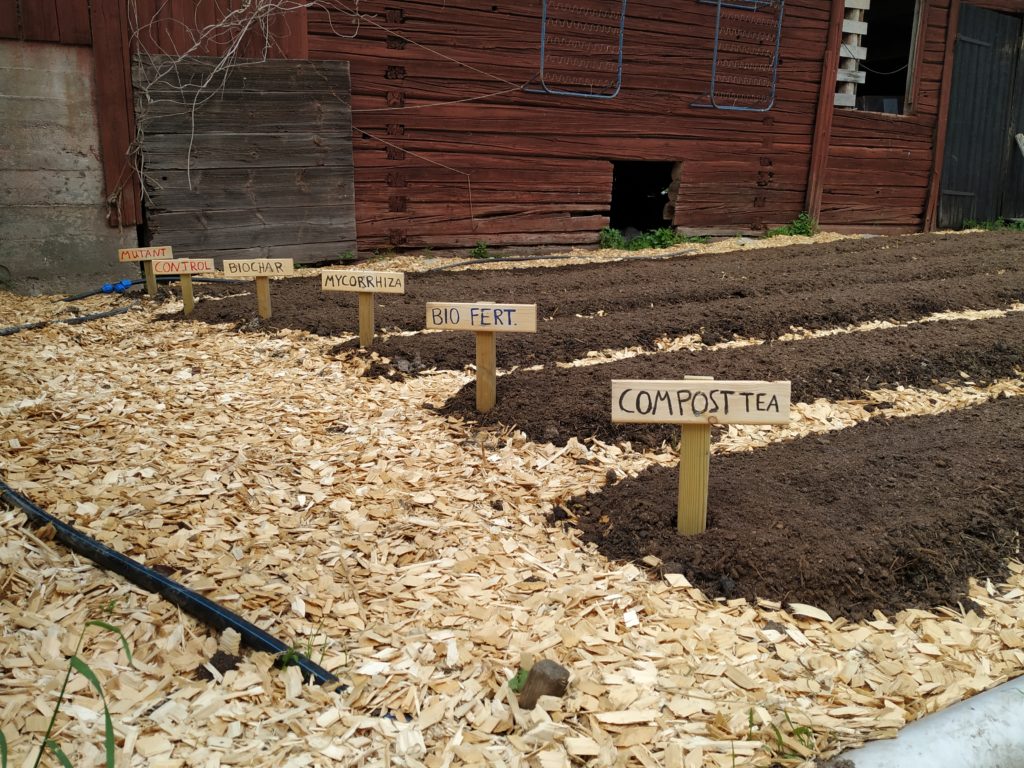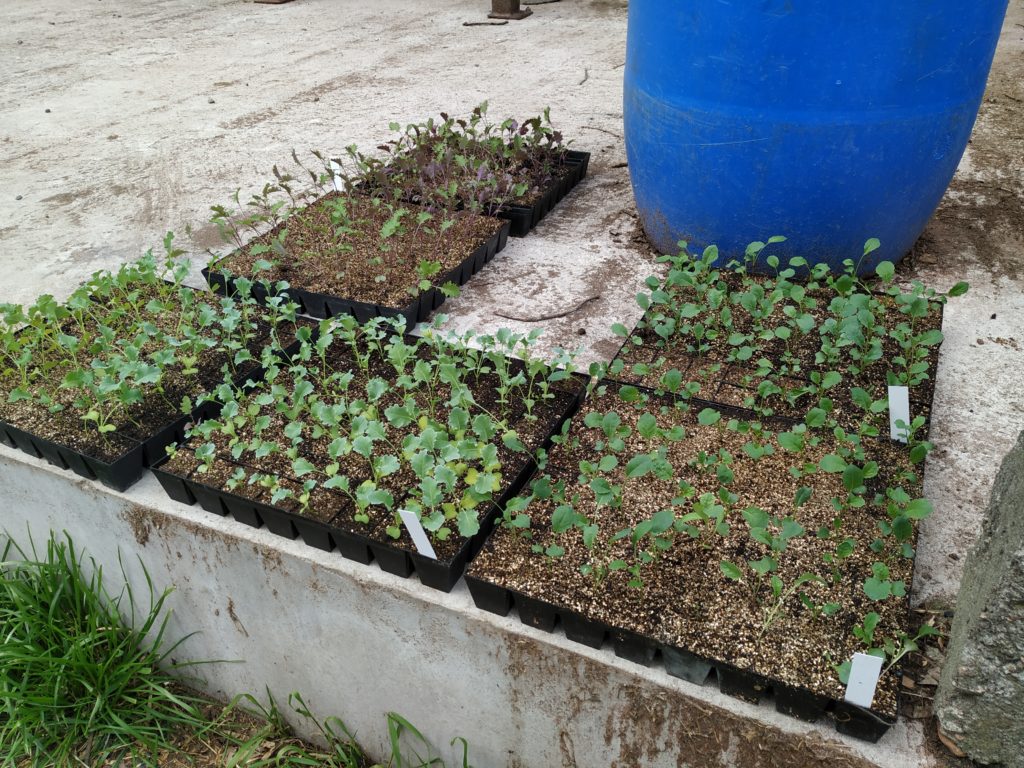
Today we set up a science experiment on the farm. Last week we had prepared six 50 cm x 800 cm beds next to the barn where a pig paddock had been last year. There was some weed which needed clearing and a rancid smell from some pig food which had gone anaerobic and manure.
We flattened the ground and spread out any bits which had a lot of anaerobic material over the full width of the field so that all beds would get an equal amount. Then we brought in sixteen 10l buckets full of mature compost made from chicken bedding onto each bed. It was full of life with lots of worms, spiders, beetles, millipedes, etc. There was even a slow worm which crawled away when we dug into the compost.
To form the pathways around the beds we brought in wood chips. It would have been better to put in the wood chips after tilthing but it was very muddy and so they helped a lot to stabilize everything. We used an electric drill powered tilther to chop the compost into finer bits and make uniform beds. Ideally we would have had very fine compost which doesn’t need tilthing because the tilther disrupts the soil life a lot but we didn’t have enough fine compost.
Richard bought four bags of fine compost to put on top of each bed so that we could seed into that.
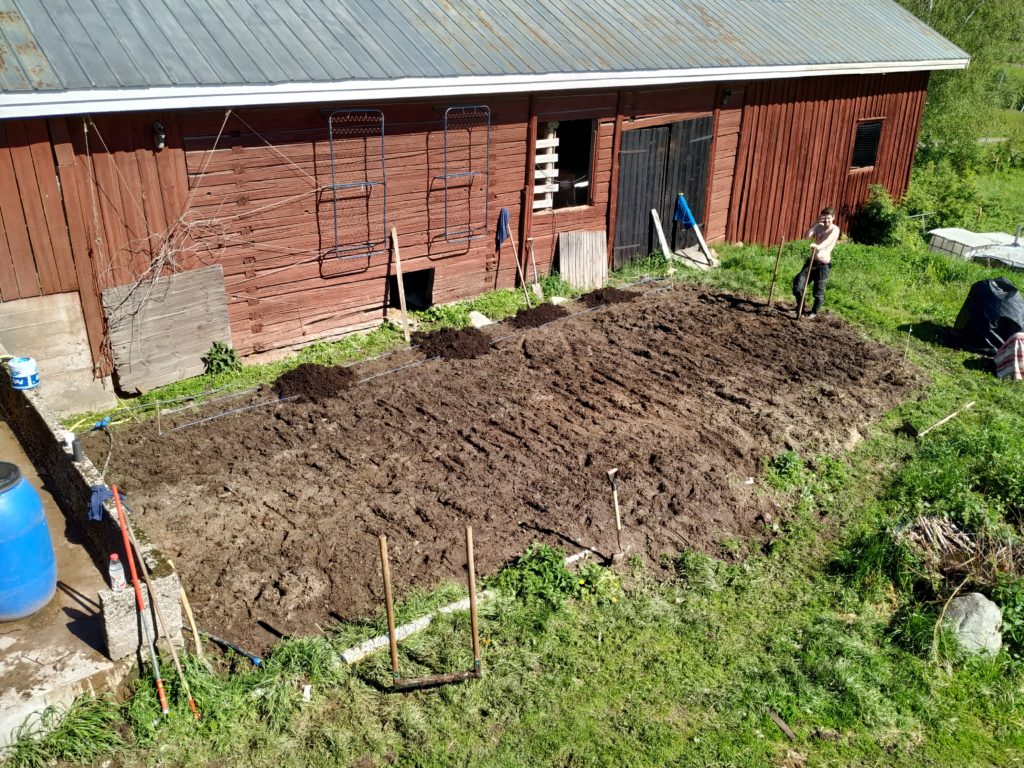
laying out compost 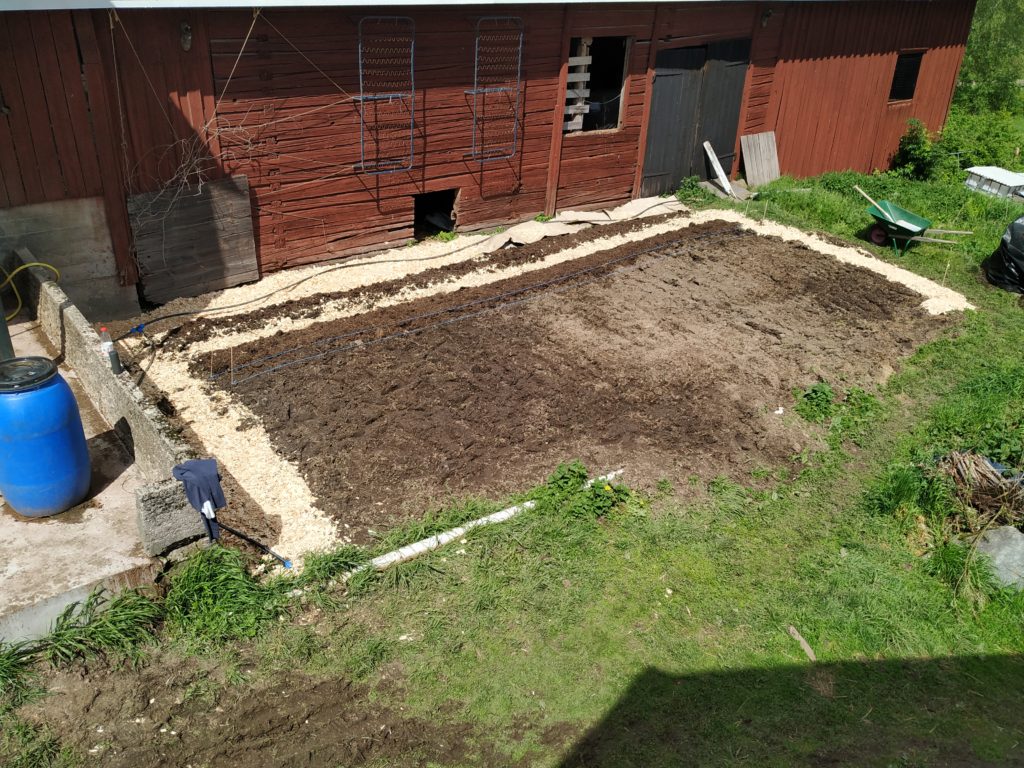
the first beds are formed 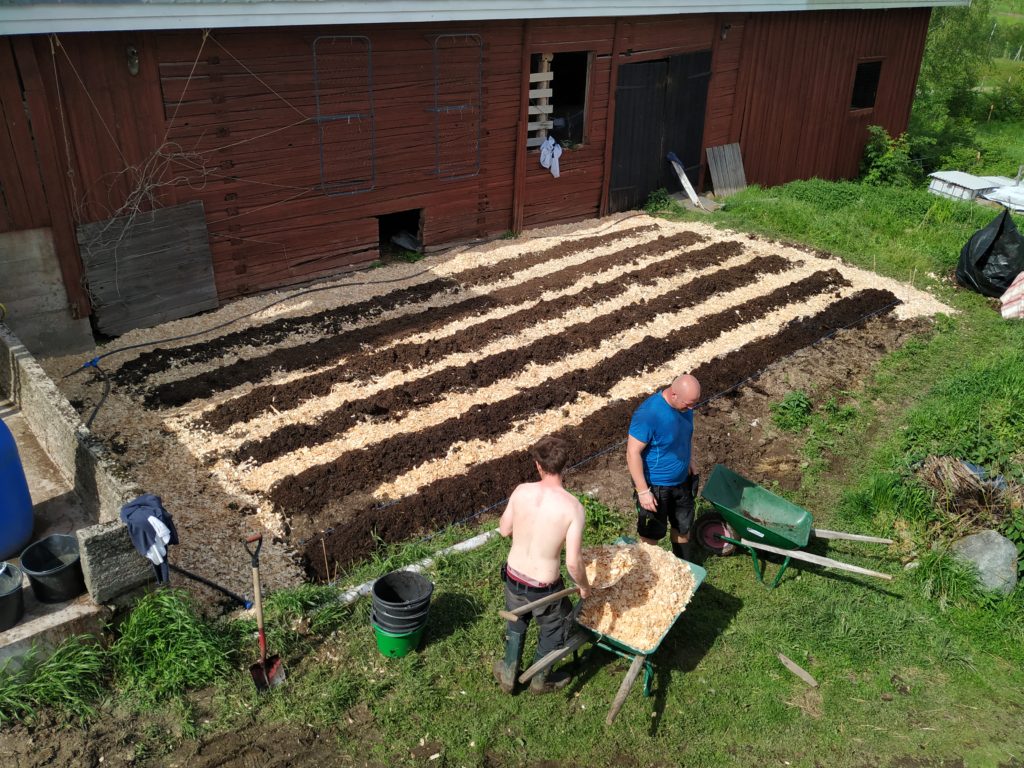
almost finished making paths
Our beds where labeled as follows:
1. Mutant – A bed with all soil amendments. Mycorrhiza, compost tea, biochar and biofertilizer
2. Biochar – A bed with four 10l bucketloads of charged biochar
3. Control – A bed with just the lumpy and the fine compost without amendments
4. Mycorrhiza – A bed innoculated with endomycorrhizal fungi
5. Bio Fert. – A bed which will be watered with 2l of bio fertilizer npk replacement watered down in 20l of water each week.
6. Compost Tea – A bed which will receive 20l of compost tea each week.
Biochar is essentially wood charcoal which has been hydrated for at least two weeks and crushed into a fine powder. Then we mixed it with our berkley compost for one week before putting it on the beds. This charges the biochar with microbial life. The small pores in the charcoal act like caves which hold water well and give microbes room to breed. The microbes will then cycle nutrients from the compost and make them plant available.
After tilthing in the biochar in the biochar and mutant beds we watered down all of the beds with 20l of water. It is important that we give every bed the same treatment, same amount of water, etc. except for our amendments, to make sure we are getting accurate results.
We then used the bedroller to compact the surface for easy seeding and mark the lines in which to plant.
We planted one row of kale, then one row of bush beans, one row of lettuce and one row of radish in each of the beds. The rows are ordered from highest to lowest plant in the direction of the sun. Except for the kale all plants should form a symbiosis with the mycorrhyzal fungi. We made sure to seed the same number of plants in each bed. Tomorrow morning the compost tea will be ready and we will apply that aswell as the biofertilizer and mycorrhiza to the beds respectively.
I am excited to see what this little experiment can teach us about plant growth and different variables in soil life.

